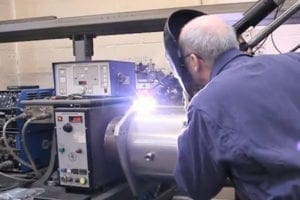Do You Really Need “Clean Steam”?
By: Priorclave North America
Category: Lab Autoclaves
Autoclave buyers are again wondering if their water and steam is “clean” enough. This is likely due to the publication of ISO/TS 5111:2022, or “Guidance on quality of water for sterilizers, sterilization and washer-disinfectors for health care products,” at the end of 2022.
According to Tony Collins (Managing Director at Priorclave Ltd), “This has been, forgive the pun, bubbling beneath the surface for quite some time. The concern—which is reasonable in medical and pharmaceutical contexts—is that small trace elements might go into autoclave steam and then find their way onto items that have been steam sterilized. It’s a big issue on the production side in certain parts of the pharma industry, where it’s clearly vital that you be able to assure everyone that your product is reaching shelves precisely as formulated.”
But pharmaceutical production is only one of the almost innumerable uses for autoclaves. That industry’s need for “clean steam” is once again creating confusion across the marketplace.

For years, companies like Priorclave have built “clean steam-ready” autoclaves with all stainless steel pipes, crevice free polish on all plumbing, tri-clover connections (also called “sanitary fittings”), and the appropriate alternate water-level monitoring systems. The issue isn’t whether or not a given autoclave manufacturer can meet this clean steam specification. The issue is whether it’s worth the extraordinary expense to buy, use, and maintain a sterilizer designed with the pharmaceutical industry’s needs in mind.
The High Cost of “Over-Specification”
A government customer recently contacted Priorclave looking for an autoclave for an agricultural/veterinary research station. They had brought in a consultant to help them write up a new autoclave specification for their lab. What that expert ultimately specified was a full “clean steam” autoclave, with bright-polished crevice free surfaces, pipework, and connections.
Priorclave ultimately chose not to pursue the business—even though the lab was an existing customer that had been happily using a standard Priorclave research-grade autoclave for years.
“They were specifying a phrama-grade autoclave,” Tony explains, “even though what they had was a purely research-grade situation, where they handled nothing more than waste loads and media preparation. None of these very expensive features in their specification was remotely relevant to the actual work being done in the lab. But in the end they’re going to pay two or three times the price for something that could do the same job, and spend twice as much maintaining it.”
Tony is quick to point out that there was nothing nefarious here. This expensive
“over-specification” arose from simple confusion. Autoclaves are put to so many different uses (many of them quite niche) in so many settings. It’s difficult for an outsider to distinguish which applications demand what features. Meanwhile, the regulatory framework is complex and everyone wants to be sure they are in full compliance.
“But the net result is still that this drives labs toward a much more expensive solution unnecessarily. In this case it was doubly unfortunate, because it’s our tax money. They needlessly spend more to get something less suitable and then have less money to do the research they set out to do.”
Simple Advice to Avoid Autoclave Over-Specification
Tony advises that, before contacting any outside consultants, you take stock of what work your lab does on a daily basis. Ask two important questions:
- Are we mostly (or only) processing waste loads? If it’s destined for the landfill, you really only care that the load is sterilized, not whether or not it may have some trace minerals from your municipal water supply on it.
- Will the steam even contact the item I’m sterilizing? For example, most growth media is sterilized in closed containers. Since the steam never touches the media, it cannot leave any residue behind that could alter your results.
Most research, R&D, teaching, and industrial labs fit in this category: the sorts of potential contaminants present in drinking water have absolutely no ill effect on your work. In that case, standards like ISO/TS 5111:2022 do not apply, and specifying a “clean steam” sterilizer is a costly mistake.
This is obviously a tricky business. Give us a call and we’ll help you properly specify the right autoclave for your research, education, or industrial lab. Priorclave would rather sell a less expensive unit and know that the lab has exactly what it needs than waste everyone’s time and funds.

